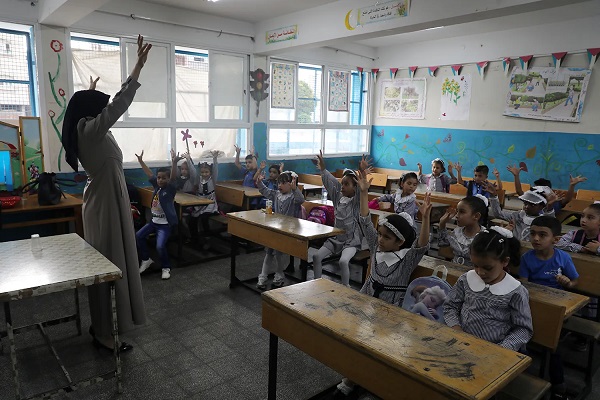Education
Students can’t use AI to cheat on standardized tests

From the Fraser Institute
As the schoolyear winds down, many students across Canada will hand in their final assignments and write their final exams. Cutting corners and outright cheating in school is easier than ever. If you need to write an essay, just plug in the assignment instructions and let artificial intelligence (AI) write it for you.
A recent New York Magazine article provided numerous examples of college students using AI to write formal essays, generate programming code, and even draft personalized notes. Whether you need help creating an outline, finding relevant sources or writing an introduction, AI can do all these things and more.
Many K-12 students also use AI for their assignments. Anyone who is worried about being caught just needs to tell ChatGPT (or whichever AI program they use) to make it look like the essay was written by a high school student.
Catching cheaters is nearly impossible—and it’s getting harder as AI gets increasingly sophisticated. Even so-called AI detectors like Turnitin, which scan essays for patterns that indicate the use of AI, are far from perfect. In other words, there’s no easy or low-cost way to prevent students from using AI on their homework assignments.
Obviously, this is a significant problem. If students use AI to do most of their homework, they aren’t going to learn important academic skills. This does not bode well for their future or the general productivity of our labour force.
Fortunately, there’s one academic measurement tool available that AI cannot interfere with—in-person standardized tests, which are administered to all students in a particular grade at the same time and are assessed by outside evaluators using consistent criteria. They can be grade-level tests or exams that are required for graduation.
For example, Grade 12 students in Alberta must write diploma exams in core subjects such as English language arts, mathematics, social studies and science. These exams are created by the provincial Ministry of Education and are marked centrally by a group of teachers. They count for 30 per cent of a student’s final grade, with the remaining 70 per cent coming from the school-awarded mark.
Because all students must write the same exam and are evaluated according to the same standard, it’s possible to objectively determine whether students have met the appropriate academic outcomes. Importantly, students cannot use AI when writing these exams since all diploma exams are strictly supervised.
Thus, even if some students had, for example, used AI to write their English essays at home, their diploma exam marks will reveal the true level of their writing ability. If there are significant discrepancies between the diploma exam mark and the school-awarded mark, this can indicate where changes need to be made.
Unfortunately, many provinces do not have diploma exams, and this leaves their schools more susceptible to cheating with AI. For example, while British Columbia requires all Grade 12 students to write (but not pass) a literacy assessment, this assessment does not count toward a student’s final grade. Even worse, the assessment is “not based on a particular subject matter or course.” Thus, the B.C. literacy assessment has little value in combating the problem of AI cheating. This puts the burden of catching cheaters entirely on teachers and principals.
To make matters worse, standardized testing is on the decline across the country. Over the last decade in most provinces, standardized tests have been administered at fewer grade levels, given less value by provincial governments, and turned into non-content specific assessments. This is exactly the wrong direction.
If provincial education ministries are serious about maintaining academic standards, they must ensure that students write standardized tests at multiple grade levels and in a variety of subjects. Students need to know that their performance on these tests will impact their final marks and that they only hurt themselves academically if they get AI to do their work for them.
When it comes to AI, we cannot put our heads in the sand. Since AI isn’t going away, it’s important that we assess students with measurement tools where students cannot use AI to cheat.
Instead of moving away from standardized testing, every province should embrace and enhance this important measurement tool. It’s the best way to ensure all students meet basic academic standards.

Michael Zwaagstra
Senior Fellow, Fraser Institute
Alberta
Schools should go back to basics to mitigate effects of AI

From the Fraser Institute
Odds are, you can’t tell whether this sentence was written by AI. Schools across Canada face the same problem. And happily, some are finding simple solutions.
Manitoba’s Division Scolaire Franco-Manitobaine recently issued new guidelines for teachers, to only assign optional homework and reading in grades Kindergarten to six, and limit homework in grades seven to 12. The reason? The proliferation of generative artificial intelligence (AI) chatbots such as ChatGPT make it very difficult for teachers, juggling a heavy workload, to discern genuine student work from AI-generated text. In fact, according to Division superintendent Alain Laberge, “Most of the [after-school assignment] submissions, we find, are coming from AI, to be quite honest.”
This problem isn’t limited to Manitoba, of course.
Two provincial doors down, in Alberta, new data analysis revealed that high school report card grades are rising while scores on provincewide assessments are not—particularly since 2022, the year ChatGPT was released. Report cards account for take-home work, while standardized tests are written in person, in the presence of teaching staff.
Specifically, from 2016 to 2019, the average standardized test score in Alberta across a range of subjects was 64 while the report card grade was 73.3—or 9.3 percentage points higher). From 2022 and 2024, the gap increased to 12.5 percentage points. (Data for 2020 and 2021 are unavailable due to COVID school closures.)
In lieu of take-home work, the Division Scolaire Franco-Manitobaine recommends nightly reading for students, which is a great idea. Having students read nightly doesn’t cost schools a dime but it’s strongly associated with improving academic outcomes.
According to a Programme for International Student Assessment (PISA) analysis of 174,000 student scores across 32 countries, the connection between daily reading and literacy was “moderately strong and meaningful,” and reading engagement affects reading achievement more than the socioeconomic status, gender or family structure of students.
All of this points to an undeniable shift in education—that is, teachers are losing a once-valuable tool (homework) and shifting more work back into the classroom. And while new technologies will continue to change the education landscape in heretofore unknown ways, one time-tested winning strategy is to go back to basics.
And some of “the basics” have slipped rapidly away. Some college students in elite universities arrive on campus never having read an entire book. Many university professors bemoan the newfound inability of students to write essays or deconstruct basic story components. Canada’s average PISA scores—a test of 15-year-olds in math, reading and science—have plummeted. In math, student test scores have dropped 35 points—the PISA equivalent of nearly two years of lost learning—in the last two decades. In reading, students have fallen about one year behind while science scores dropped moderately.
The decline in Canadian student achievement predates the widespread access of generative AI, but AI complicates the problem. Again, the solution needn’t be costly or complicated. There’s a reason why many tech CEOs famously send their children to screen-free schools. If technology is too tempting, in or outside of class, students should write with a pencil and paper. If ChatGPT is too hard to detect (and we know it is, because even AI often can’t accurately detect AI), in-class essays and assignments make sense.
And crucially, standardized tests provide the most reliable equitable measure of student progress, and if properly monitored, they’re AI-proof. Yet standardized testing is on the wane in Canada, thanks to long-standing attacks from teacher unions and other opponents, and despite broad support from parents. Now more than ever, parents and educators require reliable data to access the ability of students. Standardized testing varies widely among the provinces, but parents in every province should demand a strong standardized testing regime.
AI may be here to stay and it may play a large role in the future of education. But if schools deprive students of the ability to read books, structure clear sentences, correspond organically with other humans and complete their own work, they will do students no favours. The best way to ensure kids are “future ready”—to borrow a phrase oft-used to justify seesawing educational tech trends—is to school them in the basics.
Business
Why Does Canada “Lead” the World in Funding Racist Indoctrination?
-

 Alberta2 days ago
Alberta2 days agoAlberta’s huge oil sands reserves dwarf U.S. shale
-

 Alberta2 days ago
Alberta2 days agoCanada’s New Green Deal
-

 Energy1 day ago
Energy1 day agoCanada’s sudden rediscovery of energy ambition has been greeted with a familiar charge: hypocrisy
-

 Business2 days ago
Business2 days agoCOP30 finally admits what resource workers already knew: prosperity and lower emissions must go hand in hand
-

 armed forces2 days ago
armed forces2 days agoOttawa’s Newly Released Defence Plan Crosses a Dangerous Line
-

 Business1 day ago
Business1 day agoOttawa Pretends To Pivot But Keeps Spending Like Trudeau
-

 Indigenous2 days ago
Indigenous2 days agoResidential school burials controversy continues to fuel wave of church arsons, new data suggests
-

 Daily Caller1 day ago
Daily Caller1 day agoParis Climate Deal Now Decade-Old Disaster












